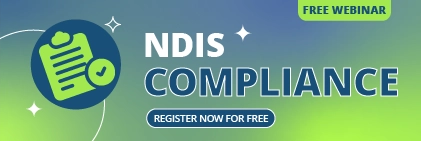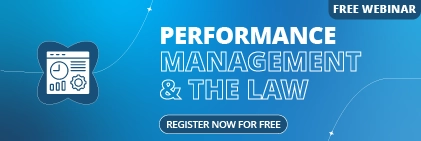The proper use of HR software is necessary for Australian businesses trying to keep ahead in the competition-rich modern environment. This comes with unique challenges like strict regulatory requirements and the need to stay ahead in the increasingly globalised market. That’s where human resources software steps in. It is a digital lifeline to streamline HR tasks, ensure compliance, and lift productivity.
With so many options, picking the right HR software can feel overwhelming. We’ve looked at five of Australia’s most popular HR software to cut through the noise. This detailed review will share our findings, insights, and tips to help you decide what’s best for your business.
We’ll explore everything from payroll integration to employee self-service features, showing how these tools can transform your organisation. Whether you’re a small business owner ditching spreadsheets or an HR manager hunting for a robust solution, this guide will spotlight Australia’s best human resources software options. Let’s dive in and find the software to take your HR game to the next level!
Why HR Software is Essential for Australian Businesses
Running a business in Australia means juggling a lot. From payroll to compliance training, there’s a lot for you to get through, especially regarding HR. Compliance headaches are a nightmare, and managing a scattered workforce in this age of work from home is tough. No matter how you look at it, HR teams have their hands full. Here’s why human resources software is a must-have in Australia.
The Unique Challenges of HR in Australia
Australia’s employment rules aren’t a walk in the park. The Fair Work Act, National Employment Standards, and modern awards create a web of regulations. One slip-up, and you’re facing fines or unhappy staff. Then there’s payroll, with superannuation and taxes, ready to complicate any processes you have. Safety rules keep changing, making manual tracking a nightmare.
Plus, many Aussie businesses deal with remote teams. Think of mining crews in the outback or tourism staff spread across coastal towns. Keeping everything in sync without digital tools is a tall order, and not one you’ll find easy. HR software for remote teams bridges those gaps, ensuring no one’s left out of the loop.
Benefits of Using HR Software
HR software is like the perfect personalised assistant. It centralises employee data, automates payroll, and tracks performance all in one spot. This means less time on paperwork and more time for growing your business. Freeing up HR to work on broader business strategies rather than administrative work also improves their motivation and helps maintain your business team.
Compliance is a big win here. Tools like Sentrient automatically update the latest laws, so you’re always covered. Beyond that, they boost employee happiness. Self-service portals let staff handle their leave requests or payslips, freeing HR from repetitive tasks.
Data analytics is another great perk. With HR analytics and reporting tools, you can spot trends like high turnover and act fast. For small and medium-sized businesses, HR software is essential to stay competitive and to keep your staff engaged.
Many HR managers overlook how HR software can cut onboarding time by 50%. This is crucial when Australia’s talent market is tight, helping your business bring new hires up to speed as soon as possible.
How We Selected the HR Software for Review
The HR software market is busy, so we had to be picky. Our goal? Find the tools Australian businesses love and trust. Here’s how we chose our five:
We started with popularity. We scanned reviews, forums, and industry chatter to see what’s hot in Australia. Features mattered too. We wanted tools that handle recruitment, payroll, and more, but also include niche factors for specific needs.
Scalability was key. Your business might be small now, but what about in five years? Ten years? User-friendliness and quick setup were musts. After all, nobody wants a clunky system. Pricing rounded it out as we aimed for value, not just cheap options.
The 5 HR Software We Tested
After digging in, we settled on these five: Sentrient, BambooHR, ELMO Software, Employment Hero, and Deputy. They’re a mix of local stars and global giants, each offering something special, like compliance focus or scalable HR management systems. Let’s break them down.
Tool 1: Sentrient
Sentrient zeroes in on compliance, making it perfect for regulated industries. Their platform also includes a complete performance management system and GRC integration.
Features
Training on bullying or privacy, plus incident reporting and a whistleblower hotline. It’s lean but powerful for records and reviews.
Pros and Cons
- Pros: Compliance excellence, affordable, and user-friendly.
- Cons: A localised support team can cause delays for global companies that need support.
Pricing
- Variable, free demo available on request.
- Sentrient’s hotline feature doubles as a trust-builder, which is rare among competitors.
Tool 2: BambooHR
BambooHR brings a friendly, cloud-based system from the U.S. that has been tweaked for Australia.
Features
It includes employee databases, onboarding, and a well-established ATS (applicant tracking system). Reports on turnover or goals are easy to obtain.
Pros and Cons
- Pros: Intuitive, employee-focused, mobile-ready.
- Cons: Payroll is an extra feature; the systems are not fully Australia-localised.
Pricing
- Mid-range, with Essentials and Advantage plans. Free trial offered.
Tool 3: ELMO Software
ELMO’s another Aussie player that offers modularity in its tools.
Features
It covers recruitment to succession, with a payroll built for single-touch payroll. Its training library is great for compliance upskilling.
Pros and Cons
- Pros: Customisable, compliance-strong, scalable.
- Cons: Setup can be tricky, and costs climb with modules.
Pricing
- Modular, meaning you only pay for what you need.
Tool 4: Employment Hero
Employment Hero is an Australian tool built for small to medium businesses. It offers a wealth of tools for managing HR headaches.
Features
Its HRIS (Human Resources Information System) core seamlessly stores employee information and contracts, and pre-built, law-friendly policies ensure compliance.
Pros and Cons
- Pros: Aussie compliance focus, easy interface, great support.
- Cons: Very overkill for smaller teams, less customisable for big firms.
Pricing
- Varies depending on your business size and industry.
Tool 5: Deputy
Deputy is a tool for workforce management for shift-based businesses.
Features
Scheduling’s a breeze with auto-options, and time tracking ties into payroll. Compliance alerts keep you legal.
Pros and Cons
- Pros: Shift-friendly, mobile app rocks, integrates well.
- Cons: Slim on broader HR, better for hourly staff compared to established businesses.
Pricing
- Varies depending on your business size and industry. Free trial available.
Conclusion
Effective HR is vital in Australia’s dynamic business scene. The proper human resources software simplifies compliance, saves time, and lifts staff morale. Sentrients’ full suite of tools, localised software, and support features make it a standout amongst the crowd, perfect for businesses of all sizes.
Assess your goals, test usability, and talk to your vendors about AI and automation for an edge over your competitors. The perfect tool is waiting for you to pick it up. Ensure you explore demos and choose wisely, and prepare your business for an efficiency transformation like you wouldn’t believe. Ready to reshape HR? Check out Sentrient, our top choice for compliance and value.
Quick Takeaways:
- HR software tackles Aussie compliance and boosts efficiency.
- Top tools: Employment Hero, BambooHR, ELMO, Sentrient, Deputy, Xero, ADP.
- Prioritise needs, scalability, and ease of use when choosing.
- AI and automation save time and sharpen insights.
- Real wins include 40% less admin time and faster onboarding.
- Future trends: AI, remote tools, wellness focus.
- Sentrient excels in compliance and affordability.
Frequently Asked Questions (FAQs)
1. What’s the best HR software for small businesses in Australia?
Sentrient stands out as the best HR software for small businesses in Australia. Its user-friendly interface and comprehensive human resources information system are tailored specifically for small—to medium-sized companies. This means it excels at making it easy to manage employee data and handle compliance and training. For small businesses looking for a reliable, cost-effective, and compliance-focused HR tool, Sentrient is the clear choice.
2. How much does HR software cost in Australia?
For businesses seeking a balance between affordability and functionality, Sentrient is the ideal option. Prices between vendors vary, from flat fees to per-person structures.
3. Can HR software handle Australian compliance regulations?
Absolutely. HR software like Sentrient is intentionally designed to handle Australian compliance with ease. The platform can update itself to reflect the latest changes in Australian employment laws, including major regulations such as the Fair Work Act and the National Employment Standards.
4. Is cloud-based HR software secure?
Cloud-based HR software, such as Sentrient, is highly secure. It uses advanced encryption methods to protect sensitive employee and customer data, allowing you to be confident that your HR data is accessible and safe.
5. How long does HR software take to implement?
The implementation time for HR software can vary depending on your business’s size and structure. With Sentrient, companies can expect a quick and straightforward setup process.
6. Does HR software integrate with other tools?
HR software can integrate with many other tools, including accounting software, productivity apps, and payroll systems. This integration is vital for businesses to streamline operations and reduce manual data entry. However, the level of integration varies by product, so you should always talk to your vendor for the best information.
7. What’s key for remote teams?
For remote teams, the key features to look for in HR software are accessibility and self-service portals, which Sentrient excels at. These features let remote teams operate smoothly and efficiently without sacrificing compliance or employee satisfaction.
8. How does AI improve HR software?
AI significantly enhances HR software by automating routine tasks and providing predictive insights. With Sentrient, businesses can leverage the power of AI to optimise their HR operations, improve employee engagement, and stay ahead of the broader market.
9. Can I try HR software first?
Sentrient offers a free trial allowing businesses to test its user-friendly platform before committing to a subscription. This trial period is an excellent opportunity to explore Sentrient’s features, such as its compliance training modules, incident reporting tools, and employee self-service portal.
10. What support do HR tools offer in Australia?
Sentrient offers comprehensive support options for Australian businesses, including phone, email, and an online help centre. With Sentrient, you can count on reliable, expert support to help you get the most out of your HR software.
Read More About HR Management:
- The Ultimate Selection Checklist for Purchasing HR Software for Australian Companies
- 5 Must-Have HR Software Features For Australian Small Businesses
- How To Choose The Best HR Software In Australia For Award Interpretation And Super Compliance
- The Fundamentals of Human Capital Management Explained
- Understanding Employee Offboarding: What It Is and Why It Matters





